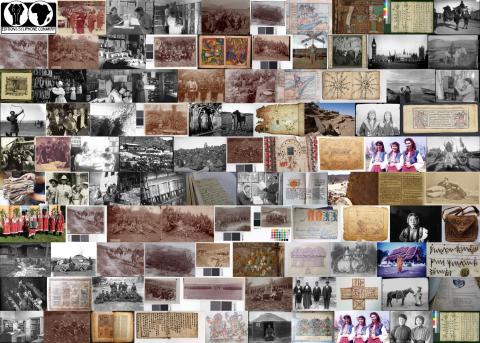Aims and objectives
Due to the significance of the Buddhist Sanskrit manuscripts of Nepal as the only original sources of Mahayana Buddhism, Buddhist scholars and monks around the world have collected and studied them. All efforts to date have been focused on researching institutional holdings. However, the prevailing manuscript culture led individual Buddhists to store and preserve them in Viharas (Buddhist monasteries) and individual Buddhist families. No official information is available on such holdings and no attempts have been made to preserve these manuscripts. Consequently, the manuscripts are gradually decaying and being destroyed. This project will survey Viharas and individual collections, and detail information about their manuscripts. Important and vulnerable texts will be digitised and preserved for future use.
In the city of Lalitpur it is believed that manuscript holdings constitute from 2,000 to 3,000 texts of varied themes such as diverse ritual texts, Vrata Vidhana, philosophical treatises such as Sutras and commentaries, eulogies, and so on. The collectors hold these texts for religious not academic purposes - by worshipping the texts in a shrine room, merit will be accumulated. Through being kept in shrine rooms for long periods without their chests being opened or through Puja being continuously performed on them, a considerable number of manuscripts have already been destroyed. The tradition of studying Sanskrit manuscripts has already died out. Therefore this priceless heritage must be saved, made accessible, and studied.
It is anticipated that there is the possibility of finding texts such as sutras or commentary that are not available in public archives. A Buddhist community called the Dhakhwas and Tuladhars who had traded with Tibet, procured Sanskrit manuscripts in Tibet and also on their return to Nepal. Thus private collections contain manuscripts written locally and also those produced in Tibet.
The number and subjects of these handwritten texts in private collections vary considerably. These texts were written in medieval times, when Buddhist scholarship was highly developed in Nepal, and were passed down through the generations.
As part of the preliminary research, many owners have agreed that this is necessary work and will cooperate with the project’s preservation efforts. Individual owners have given permission for the project team to examine their collections, document them and, if necessary, to digitise them. If digitised, the owners will be given a CD containing the digital copies of their manuscripts. Copies of all the digital manuscripts will be deposited with the Lotus Research Center in Lalitpur and with the British Library.
Outcomes
The records copied by this project have been catalogued as:
- EAP676/1 Nirmala collection
- EAP676/2 Shanker Thapa collection
- EAP676/3 Padmavarṇa Mahāyāna Mahāvihāra collection
- EAP676/4 Naresh Shakya collection
- EAP676/5 Milan Shakya Collection
- EAP676/6 Rashmi Shakya Collection
- EAP676/7 Rāj Bhāī Vajracārya Collection
- EAP676/8 Gyānakar Vajrācārya Collection
- EAP676/9 Aṣṭa Mān Shakya
- EAP676/10 Purṇa Lakṣmī Shakya Collection
- EAP676/11 Indra Kumārī Vajrācārya Collection
- EAP676/12 Dharma Rāj Vajrācārya Collection
- EAP676/13 Suddodhan Shakya Collection
- EAP676/14 Jñāna Ratna Shakya Collection
- EAP676/15 Chakra Rāj Vajrācārya Collection
- EAP676/16 Dipak Vajrācārya Collection
- EAP676/17 Tej Ratna Vajrācārya Collection
Due to the cyber-attack on the British Library in October 2023, the archives and manuscripts database is currently inaccessible and we are unable to provide links to the catalogue records for this project.
A PDF catalogue is available here.



